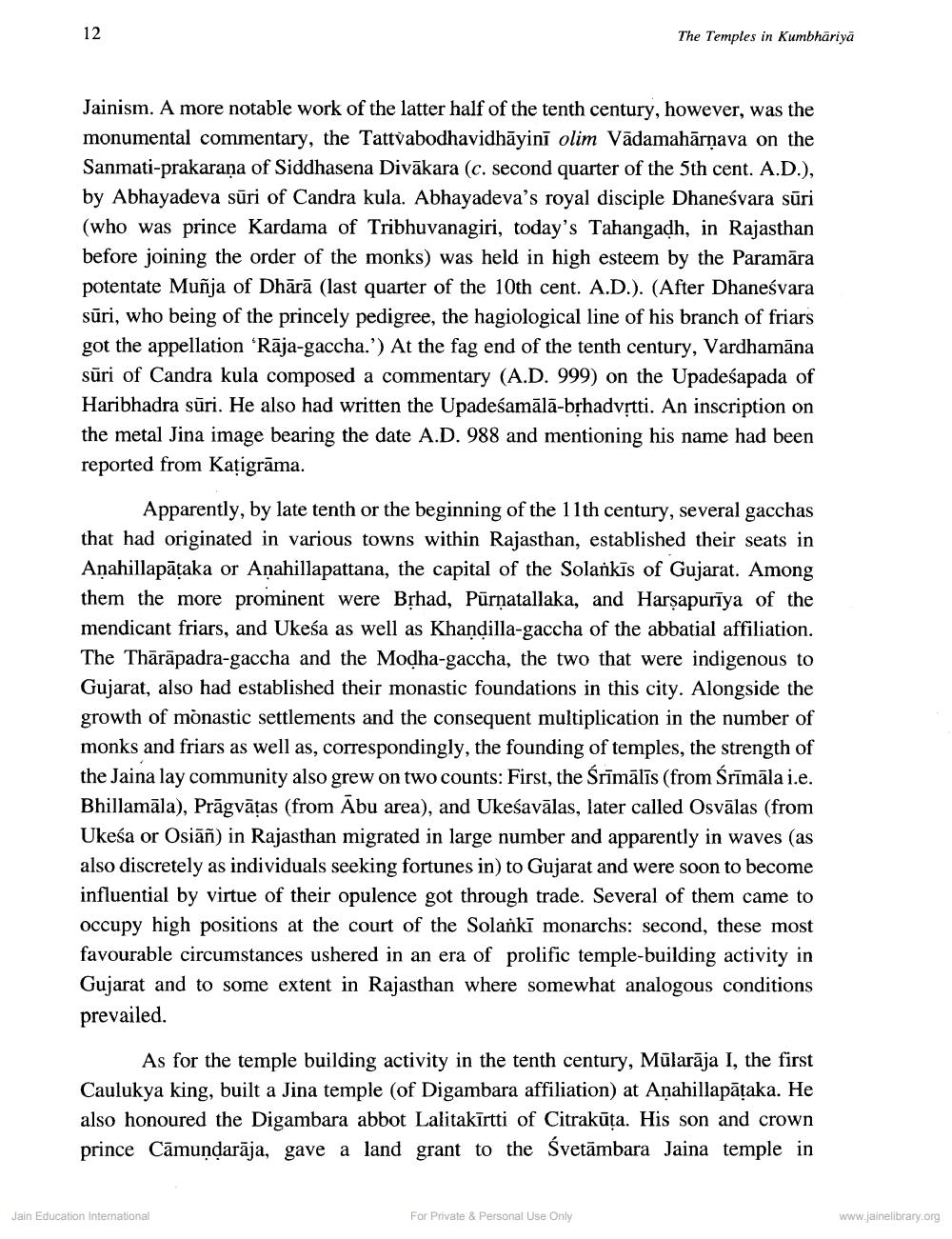________________
The Temples in Kumbhāriyā
Jainism. A more notable work of the latter half of the tenth century, however, was the monumental commentary, the Tattủabodhavidhāyinī olim Vādamahārņava on the Sanmati-prakarana of Siddhasena Divākara (c. second quarter of the 5th cent. A.D.), by Abhayadeva sūri of Candra kula. Abhayadeva's royal disciple Dhaneśvara sūri (who was prince Kardama of Tribhuvanagiri, today's Tahangadh, in Rajasthan before joining the order of the monks) was held in high esteem by the Paramāra potentate Muñja of Dhārā (last quarter of the 10th cent. A.D.). (After Dhanesvara sūri, who being of the princely pedigree, the hagiological line of his branch of friars got the appellation ‘Rāja-gaccha.') At the fag end of the tenth century, Vardhamāna sūri of Candra kula composed a commentary (A.D. 999) on the Upadeśapada of Haribhadra sūri. He also had written the Upadeśamālā-brhadvrtti. An inscription on the metal Jina image bearing the date A.D. 988 and mentioning his name had been reported from Katigrāma.
Apparently, by late tenth or the beginning of the 11th century, several gacchas that had originated in various towns within Rajasthan, established their seats in Anahillapātaka or Anahillapattana, the capital of the Solankīs of Gujarat. Among them the more prominent were Brhad, Pūrņatallaka, and Harsapurīya of the mendicant friars, and Ukeśa as well as Khandilla-gaccha of the abbatial affiliation. The Thārāpadra-gaccha and the Modha-gaccha, the two that were indigenous to Gujarat, also had established their monastic foundations in this city. Alongside the growth of monastic settlements and the consequent multiplication in the number of monks and friars as well as, correspondingly, the founding of temples, the strength of the Jaina lay community also grew on two counts: First, the Śrīmālīs (from Śrīmāla i.e. Bhillamāla), Prāgvātas (from Abu area), and Ukeśavālas, later called Osvālas (from Ukeśa or Osiāñ) in Rajasthan migrated in large number and apparently in waves (as also discretely as individuals seeking fortunes in) to Gujarat and were soon to become influential by virtue of their opulence got through trade. Several of them came to occupy high positions at the court of the Solanki monarchs: second, these most favourable circumstances ushered in an era of prolific temple-building activity in Gujarat and to some extent in Rajasthan where somewhat analogous conditions prevailed.
As for the temple building activity in the tenth century, Mūlarāja I, the first Caulukya king, built a Jina temple (of Digambara affiliation) at Anahillapātaka. He also honoured the Digambara abbot Lalitakīrtti of Citrakūta. His son and crown prince Cāmundarāja, gave a land grant to the Svetāmbara Jaina temple in
Jain Education International
For Private & Personal Use Only
www.jainelibrary.org




